Is Formula More Filling Than Breastmilk
46 hours of research 5 minute read

Babies feel full with BOTH breast milk and formula. The difference all boils down to how digestion occurs. Babies digest breast milk faster than formula milk so they feed more frequently. Infant formula takes longer to digest and may be considered more filling than breast milk.
Breast Milk: The Gold Standard
Breast milk is considered to be the best source of infant nutrition. It contains protein, carbohydrates, fat, and nutrients that babies need in order to grow and thrive. But some moms experience challenges so they are either unable to breastfeed, exclusively breastfeed, or sustain breastfeeding for a long time.
Organic Infant Formula: The Next Best Thing
Moms should not feel guilty when they are unable to breastfeed. There are medical concerns, supply issues, and time constraints that affect breastfeeding.
Thankfully, there are available options to feed babies – one of which are European organic baby formulas that are made from 100% organic ingredients. These contain all the necessary nutrients, vitamins, and minerals for your baby's growth and development. These are free from GMO, pesticides, and hormones and are the next best thing to breast milk or a good supplement to breastmilk.
Organic baby formulas are formulated to mimic breast milk. Consumption of cow’s milk as an alternative is recommended in many countries and studies show that it positively influences the growth of children.
How is Breast Milk Different to Formula?
Babies feel full with BOTH breast milk and formula. The difference all boils down to how digestion occurs. Babies digest breast milk faster than formula milk so they feed more frequently. Infant formula takes longer to digest and may be considered more filling than breast milk because of the following factors:
- Consistency
- Protein composition
- Presence of starch in some formulas
- Availability
Formula and Breastmilk Comparison

Foremilk vs. Hindmilk: Milk Consistency
You probably heard of these terms: foremilk and hindmilk in relation to breastfeeding.
- Foremilk is the milk your baby gets at the start of the feed. This is thinner and has higher amounts of lactose. Foremilk is primarily to satisfy the baby’s thirst.
- Hindmilk is the milk your baby gets towards the end of the feed. This is thicker and creamier and has a higher content of fat.
It is important for babies to breastfeed effectively so they can get both foremilk and hindmilk. Babies can have Lactose Overload. This is when babies get more foremilk than hindmilk. Since foremilk is watery and low in fat, it gets passed through the digestive system too fast for lactose to be digested. This results in gas, frothy stool, and pain. They also do not get enough fat that is found in hindmilk.
Parents need pay closer attention to breastfeeding and may need to do the following:
- Check the baby’s latch. Babies need to latch correctly to have better breast milk flow.
- Check the positions in breastfeeding. Some parents say that effective positions for faster milk flow are side-lying and laid-back positions.
- Check how often the babies switch from each breast. If babies switch without “emptying” one breast, they will mostly get more foremilk and little hindmilk and result in lactose imbalance.
- Feed more frequently.
On the other hand, baby formula is always consistent. If the feeding guide is followed, a bottle of prepared formula has the same nutrition value for the corresponding age of a baby. In this case, parents do not have to worry about lactose imbalance.
Protein Composition
Breast milk has two classes of protein: Whey and Casein. Whey is liquid and is easier to digest while Casein becomes curds in the stomach and takes longer to digest. The ratio of Whey and Casein fluctuates and decreases depending on the stage of breast milk.
Table 1: Whey/Casein Ratio of Breast Milk
| Breast Milk Stage | Whey/Casein Ratio |
|---|---|
|
Early Lactation |
80/20 |
|
Mature Milk |
70/30 |
|
Late Lactation |
50/50 |
Reference
In the case of formula, the Whey/Casein Ratio is also consistent.
Table 2: Whey/Casein Ratio of Infant Formula
| Milk Type or Stage | Whey/Casein Ratio |
|---|---|
|
Infant Formula (Stage 1) |
60/40 |
|
Follow-on Formula (Stage 2 and beyond) |
40/60 |
|
Cow’s Milk |
80/20 |
|
Hypoallergenic Formula |
100/0 |
Formula With a 100/0 Whey/Casein Ratio
These formulas have 100/0 Whey/Casein Ratio. HiPP HA is the first organic product that is formulated to meet the needs of babies who are at risk of allergies. The milk proteins of this formula are extensively hydrolyzed or divided into small fragments to reduce the allergenic properties, so your infant can tolerate them better.
✓ Age: Birth-6 months (including premature babies)
✓Contains Probiotics & Prebiotics
✓ No sugar, no corn syrup, no soy
✓ Hydrolyzed milk proteins reduce allergic reactions
✓ Popular for constipated babies
Check Price✓ Age: 0-6 months
✓Contains Probiotics & Prebiotics
✓ No sugar, no corn syrup, no soy
✓ Hydrolyzed milk proteins reduce allergic reactions
✓ Popular for constipated babies
Check Price✓ Age: 6+ months
✓Contains Probiotics & Prebiotics
✓ No sugar, no corn syrup, no soy
✓ Hydrolyzed milk proteins reduce allergic reactions
✓ Popular for constipated babies
Check PriceBreast milk has more whey and less casein in infant formula during the early and mature milk lactation phase. Since whey is easier to digest than casein, breastfed babies tend to get hungry earlier than formula-fed infants.
Presence of Starch in Some Infant Formulas
The carbohydrate in breast milk is lactose. There are infant formulas that contain lactose, maltodextrin and starch. Babies digest lactose faster compared to baby formulas that contain maltodextrin and starch. These two ingredients make babies feel longer.
Formula With Lactose as a Carbohydrate
Like breast milk, these are formulas that contain lactose as carbohydrate.
✓ Age: 0-6 months
✓Contains Probiotics & Prebiotics
✓ No sugar, no corn syrup, no soy
✓ No starch
✓ HiPP's most popular formula
Check Price✓ Age: 6-12 months
✓Contains Probiotics & Prebiotics
✓ No sugar, no corn syrup, no soy
✓ No starch
✓ HiPP's most popular formula
Check Price✓ Age: 12+ months
✓Contains Probiotics & Prebiotics
✓ No sugar, no corn syrup, no soy
✓ No starch
✓ HiPP's most popular formula
Check Price✓ Age: Birth-6 months (including premature babies)
✓Contains Probiotics & Prebiotics
✓ No sugar or corn syrup
✓ No soy
✓ HiPP's original formula
Check Price✓ Age: 6-12 months
✓Contains Probiotics & Prebiotics
✓ No sugar or corn syrup
✓ No soy
✓ HiPP's original formula
Check Price✓ Age: 12+ months
✓Contains Probiotics & Prebiotics
✓ No sugar, no corn syrup, no soy
✓ Can be used alongside solid foods
✓ Continued nutrition for toddlers
Check Price✓ Age: 24+ months
✓Contains Probiotics & Prebiotics
✓ No sugar, no corn syrup, no soy
✓ Can be used alongside solid foods
✓ Continued nutrition for toddlers
Check Price✓ Age: Birth-6 months (including premature babies)
✓ Clean formula ingredients
✓ Demeter biodynamic certified
✓ Contains natural whey, DHA, & ALA
✓ Holle's most popular cow formula
Check Price✓ Age: Birth-6 months (including premature babies)
✓ No palm oil
✓ Contains natural whey, DHA, & ALA
Check Price✓ Age: 0-6 months
✓ Bioland certified (Organic++)
✓ No sugar, no corn syrup, no soy
✓ DHA & ALA for brain development
✓ Lebenswert's most popular formula
Check PriceFormula With Lactose and Starch Alternatives
This formula contains lactose and maltodextrin as carbohydrate:
✓ Age: 0-6 months
✓ Clean formula ingredients
✓ Demeter biodynamic certified
✓ Contains natural whey, DHA, & ALA
✓ Contains A2 milk protein for easier digestion
Check PriceSome formulas contain both lactose and maltodextrin as carbohydrates. These also contain starch to make the formula thicker and creamier.
2. HiPP Comfort
✓ Age: Suitable from birth onwards
✓ Contains Probiotics & Prebiotics
✓ No sugar, no corn syrup, no soy
✓ Reduced lactose with hydrolyzed milk protein
✓ Easy to digest formula for sensitive babies
Check Price✓ Age: 0-6 months
✓ No palm oil
✓ Contains natural whey, DHA, & ALA
✓ Demeter certified (Organic++)
Check Price✓ Age: 6-12 months
✓ No palm oil
✓ Contains natural whey, DHA, & ALA
✓ Demeter certified (Organic++)
Check Price✓ Age: 10+ months
✓ No palm oil
✓ Contains natural whey, DHA, & ALA
✓ Demeter certified (Organic++)
Check Price✓ Age: 6-12 months
✓ Clean formula ingredients
✓ Demeter biodynamic certified
✓ Contains natural whey, DHA, & ALA
✓ Holle's most popular cow formula
Check Price✓ Age: 10+ months
✓ Clean formula ingredients
✓ Demeter biodynamic certified
✓ Contains natural whey, DHA, & ALA
✓ Holle's most popular cow formula
Check Price✓ Age: 12+ months
✓ Clean formula ingredients
✓ Demeter biodynamic certified
✓ Contains natural whey, DHA, & ALA
✓ Holle's most popular cow formula
Check Price✓ Age: 6-12 months
✓ Clean formula ingredients
✓ Demeter biodynamic certified
✓ Contains natural whey, DHA, & ALA
✓ Contains A2 milk protein for easier digestion
Check Price✓ Age: 10+ months
✓ Clean formula ingredients
✓ Demeter biodynamic certified
✓ Contains natural whey, DHA, & ALA
✓ Contains A2 milk protein for easier digestion
Check PriceFormula That Contains Maltodextrin as Carbohydrate
✓ Age: 6-12 months
✓Bioland certified (Organic++)
✓ No sugar, no corn syrup, no soy
✓ DHA & ALA for brain development
✓ Appropriate from 6 months up
Check Price✓ Age: 10+ months
✓Bioland certified (Organic++)
✓ No sugar, no corn syrup, no soy
✓ DHA & ALA for brain development
✓ Appropriate from 10 months up
Check PriceKeep In Mind Availability
Breastfed babies feed on demand. Parents are on the lookout for hunger cues and they nurse until they are full. Since babies digest breast milk faster, they tend to feed every 2-3 hours.
Signs That Baby is Full
Here are signs that a breastfed baby is full:
- Baby feeds frequently, 8-12 times in a day
- Baby is visibly happy and content after feeding. Fists that are tightly closed before nursing become relaxed and opened
- Baby gains weight
- Baby urinates and has consistent bowel movement
- Baby is alert and active when awake
On the other hand, formula fed babies are fed per bottle until they are full. They may or may not finish a full bottle. Below are signs that a formula fed baby is full:
- Baby sucks with less enthusiasm
- Baby stops feeding
- Baby turns away from the bottle
Signs That a Baby is Still Hungry
These are applicable to both breastfed and formula-fed babies:
- Baby moves head from side to side
- Baby opens the mouth
- Baby sticks out tongue
- Baby places fist, hand, and fingers to the mouth
- Baby puckers lips and makes a sucking motion
- Baby nuzzles on mother’s breasts
- Baby “roots” or opens the mouth to anything that touches the cheeks
Is Formula More Filling Than Breast Milk
When discussing infant nutrition, parents frequently ask questions such as, Is formula heavier than breast milk? Is formula thicker than breast milk? Is breast milk more filling than formula? Is formula thicker than breast milk? The quick answer is both breast milk and formula can provide a feeling of fullness for babies.
The key difference is in the digestion process: breast milk is digested more easily than formula, leading to more frequent feedings. In contrast, infant formula can take longer to digest and might seem more filling. While the consistency of formulas can vary, they are typically designed to be easily digestible. Breast milk's thinner consistency supports quicker digestion, often making it appear thinner than formula. Understanding these differences is essential for making informed feeding choices for your baby's well-being.
Addressing concerns and questions like “Does breast milk make babies fuller than formula” underscores the importance of finding a formula that closely resembles breast milk's composition. Opting for formula most like breast milk ensures your baby receives comparable nourishment. This factor is crucial when choosing the best formula to supplement breast milk.
Parents make huge decisions on a daily basis – one of the biggest is what to feed the baby. The good thing is that there are now available options aside from exclusively breastfeeding. As long as your baby is fed with the best options and your baby is thriving, you are doing well. Bid mommy guilt goodbye and say hello to European organic baby formulas.
Top 3 Breastmilk Alternatives
Organic Life Start is committed to providing accurate, reliable, and trustworthy information to parents and caregivers. We carefully choose credible sources and follow a meticulous fact-checking process to uphold the highest standards in infant nutrition and parenting advice. To learn more about our dedication to accuracy, please explore our editorial guidelines.
Link To Sources


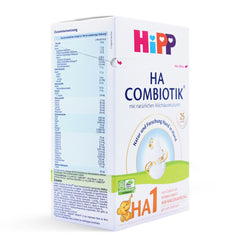
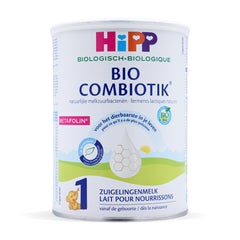
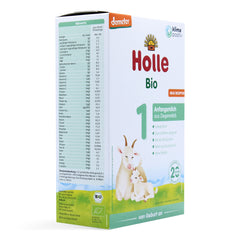
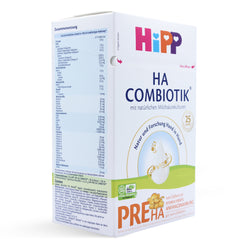


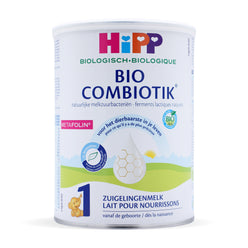
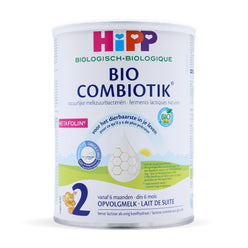
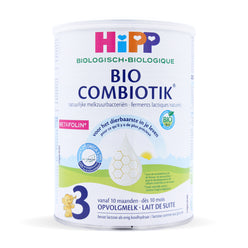









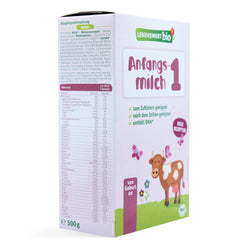


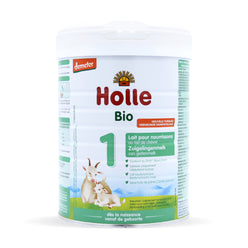
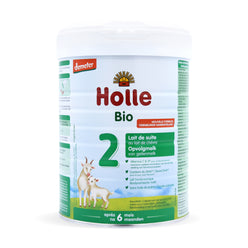
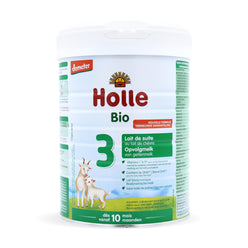
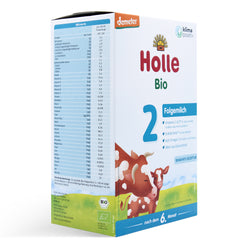
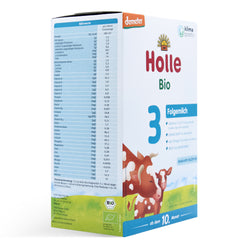
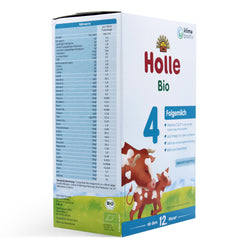
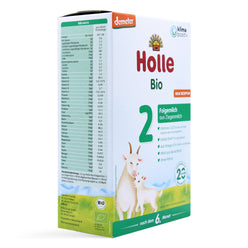
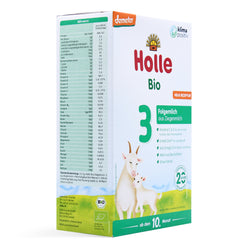

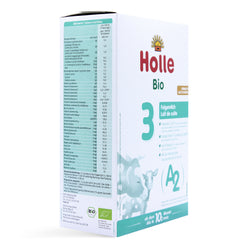
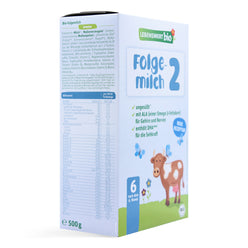







Talon -
@Raina Formula can feel more filling than breast milk because it digests a bit slower, so babies may go longer between feeds without it meaning anything is wrong. If your baby seems unusually fussy, gassy, or has very firm stools, that can be a sign she’s having a harder time digesting the new formula rather than simply feeling full. On the other hand, if she’s content after feeds and settling into a more predictable feeding rhythm, that’s usually a sign the formula is keeping her satisfied. It’s completely normal to see small changes in feeding patterns during the first few days of switching, so just watch her cues and adjust as needed.
Raina Scholl -
November 24, 2025
Can anyone share how to tell if my baby is feeling fuller from the formula or if my baby is having difficulty digesting the formula she is on? She used to be exclusively breastfed. We just recently switched to baby formula… It has been a day, and I don’t really know what to expect. Thanks in advance for your help!
Aden -
November 13, 2025
As parents, we decided to switch formulas after noticing our baby wasn’t staying full for long and seemed unsatisfied after feeds. The new formula made a big difference—it keeps our baby fuller for longer and more content between feedings. We’ve seen fewer night wakings and a happier, more settled baby overall. It’s reassuring to know our little one is getting balanced nutrition that truly meets their needs. Switching formulas turned out to be the best choice for our baby’s comfort and our peace of mind.